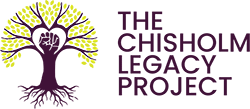Ray Diversity Fellowship
Inspired by efforts to increase diversity in environmentally-related sectors, the Roger Arliner Young (RAY) Diversity Fellowship Program supports two cohorts of Fellows per year: RAY Conservation Fellows and RAY Clean Energy Fellows. The RAY Fellowship Program aims to increase and facilitate conservation, energy efficiency, and renewable energy-related career pathways for emerging leaders of color. The RAY Fellowship Program is a two-year paid fellowship designed to equip recent college graduates with the tools, experiences, support, and community they need to become leaders in the conservation and clean energy sectors—one that, in our visions of the future, fully represents, includes, and is led by the diverse communities, perspectives, and experiences of the United States.
Resource Details
Related resources (by topic)
2022 Climate-Tech Policy “Boot Camp” for Early Career Researchers
The Center for Clean Energy Innovation at the Information Technology and Innovation Foundation (ITIF) is pleased to invite applicants to participate in its 2022 climate-tech policy “boot camp” for early career researchers. The boot camp’s main purpose is to strengthen researchers’ understanding…
A guide to changing racist and offensive names on public lands
Across the United States, thousands of mountains, rivers, lakes and other features on public lands bear racist and offensive names. From tributes to Confederate leaders, to ethnic and misogynistic slurs, these names perpetuate a violent and oppressive history of colonization…
Better Ground
Better Ground is a collective movement across Puget Sound by twelve western Washington conservation districts, also known as the “Puget Sound Conservation Districts” (PSCD). These twelve districts play a critical role in addressing natural resource needs with a coordinated approach…
Clean Energy Local Ordinances Database
NREL released two new databases of state and local wind and solar energy zoning laws and ordinances in the United States. The data sets are machine-readable so geospatial analysts and researchers can readily analyze siting impacts. This work is part…
Help us expand the Resource Hub
Share resources that you think would be a good addition to this tool and our team will review them for inclusion in future updates.
